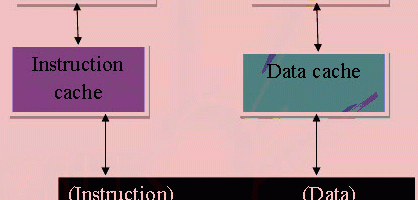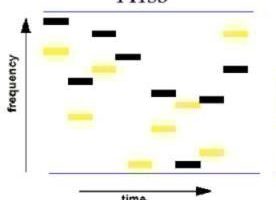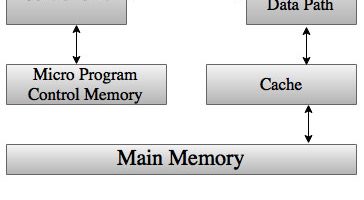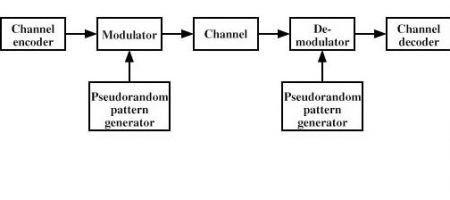Electronics Articles Archive
RISC architecture

RISC stands for reduced instruction set computer. It is a type of microprocessor architecture which utilizes a small, highly optimized instructions set rather than a more specialized set of instructions normally found in other types of architecture. Hence
Advantages, disadvantages and applications of FHSS

Advantages: There are some advantages of frequency hopping spread spectrum (FHSS) which are given below, It can be programmed to avoid some portions of spectrum . FHSS needs shorter time for acquisition. Very large bandwidth. Disadvantages: There
Difference between slow frequency hopping and fast frequency hopping

Following are the difference between slow frequency hopping and fast frequency hopping. Slow frequency hopping Fast frequency hopping In slow frequency hopping, multiple symbols are transmitted in one frequency hop. In fast frequency hopping, multiple hops are
CISC architecture

The CISC stands for complex instruction set computer. It is read only memory (ROM) based processor architecture which are designed with a full set of instruction that were intended to provide needed capabilities in the most efficient
Advantages and disadvantages and applications of time division multiplexing (TDM)

Advantages: There are some advantages of time division multiplexing which are given below, Time division multiplexing systems are more flexible than frequency division multiplexing. Time division multiplexing circuitry is not complex. Problem of cross talk is not
Difference between N-type semiconductors and P-type semiconductor

Following are the difference between N-type semiconductors and P-type semiconductor. N-type semiconductor P-type semiconductor It is type extrinsic semiconductor. It also type of extrinsic semiconductor. In N-type semiconductor, electrons are majority carriers and holes are minority carriers.
Advantages, disadvantages and applications of direct sequence spread spectrum (DSSS)

Advantages: There are some advantages of direct sequence spread spectrum which are given below, It has best discrimination against multipath signals. It avoids intentional interference such as jamming effectively. Performance of DSSS system in presence of noise
Block diagram of spread spectrum digital communication

The block diagram of spread spectrum digital communication is shown in above fig. the basic elements of a spread spectrum digital communication system with a binary information sequence at its input at the transmitting end and its
Advantages and applications of spread spectrum

There are some advantages of spread spectrum which are given below, Spread spectrum signals are highly resistant to the jamming. Many users can share a signal band with no interference. Unauthorized listening is prevented. Unintentional interference occupying
Advantages, disadvantages and applications of frequency division multiplexing (FDM)

Advantages: There are some advantages of frequency division multiplexing(FDM) which are given below, It does not need synchronization between its transmitter and receiver. Frequency division multiplexing (FDM) is simpler and easy demodulation. Due to slow narrow band